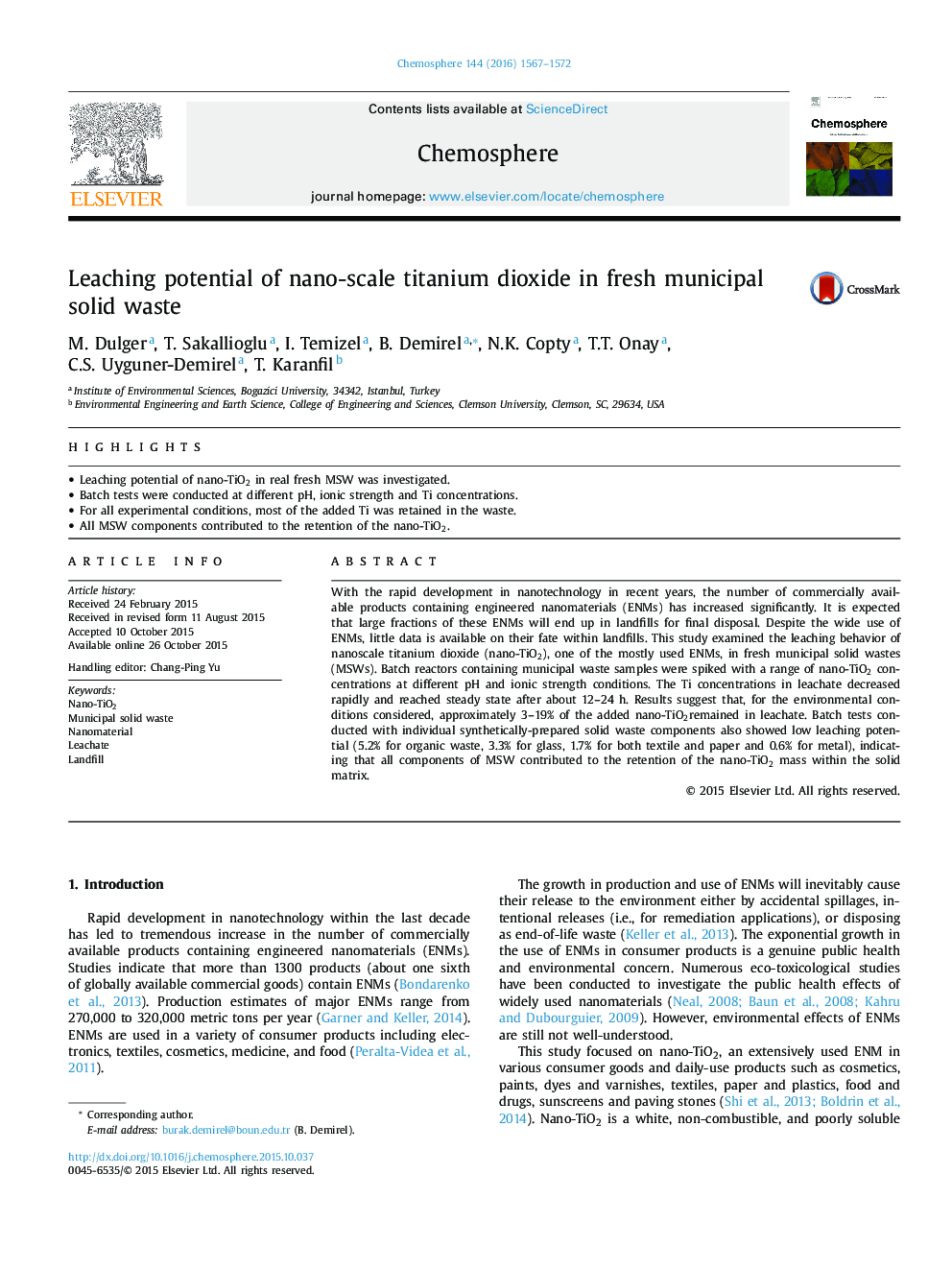| Article ID | Journal | Published Year | Pages | File Type |
|---|---|---|---|---|
| 6307256 | Chemosphere | 2016 | 6 Pages |
Abstract
With the rapid development in nanotechnology in recent years, the number of commercially available products containing engineered nanomaterials (ENMs) has increased significantly. It is expected that large fractions of these ENMs will end up in landfills for final disposal. Despite the wide use of ENMs, little data is available on their fate within landfills. This study examined the leaching behavior of nanoscale titanium dioxide (nano-TiO2), one of the mostly used ENMs, in fresh municipal solid wastes (MSWs). Batch reactors containing municipal waste samples were spiked with a range of nano-TiO2 concentrations at different pH and ionic strength conditions. The Ti concentrations in leachate decreased rapidly and reached steady state after about 12-24Â h. Results suggest that, for the environmental conditions considered, approximately 3-19% of the added nano-TiO2remained in leachate. Batch tests conducted with individual synthetically-prepared solid waste components also showed low leaching potential (5.2% for organic waste, 3.3% for glass, 1.7% for both textile and paper and 0.6% for metal), indicating that all components of MSW contributed to the retention of the nano-TiO2 mass within the solid matrix.
Related Topics
Life Sciences
Environmental Science
Environmental Chemistry
Authors
M. Dulger, T. Sakallioglu, I. Temizel, B. Demirel, N.K. Copty, T.T. Onay, C.S. Uyguner-Demirel, T. Karanfil,
